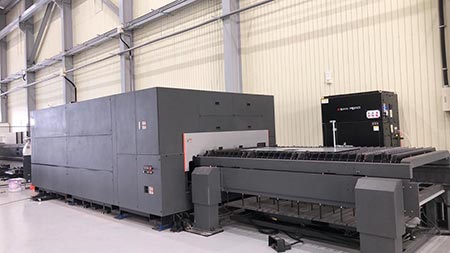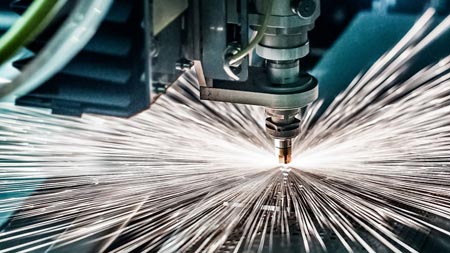Laser Cutting Processing


Laser cutting (Laser Cutting) is a highly efficient and precise metal processing technique that focuses a high-energy laser beam on the surface of the material, rapidly heating the localized area to melt or vaporize it, thereby achieving accurate cutting. This non-contact processing method minimizes thermal deformation in the material, ensuring its structural integrity, making it ideal for handling workpieces requiring high precision. In laser cutting processing, commonly used metal materials include stainless steel, carbon steel, aluminum alloy, and copper. These materials, under the influence of high-energy lasers, can achieve extremely tight tolerances at the cutting edge, significantly improving the quality of processing. Compared to traditional cutting methods such as mechanical or plasma cutting, laser cutting offers significant advantages in terms of speed, precision, and flexibility, making it an ideal choice for modern metal processing.
Professional Applications and Advantages of Laser Cutting Technology
• High Precision and Complex Design Processing:
Laser cutting technology can achieve micron-level precision, making it capable of handling intricate shapes and fine structures, especially suitable for manufacturing parts requiring high accuracy and detailed design. This is particularly important in industries such as automotive manufacturing, aerospace, and medical devices, where components often demand extremely high dimensional accuracy and processing consistency.
• High Efficiency and Automated Processing Capabilities:
Laser cutting offers extremely high cutting speeds, particularly when processing thin sheet metal, outperforming traditional technologies in production efficiency. Additionally, modern CNC laser cutting machines can achieve fully automated operations, seamlessly integrating with digital control systems, significantly reducing the need for manual intervention, further enhancing production efficiency, and minimizing human error.
• Adaptability to Various Materials:
In addition to common metals, laser cutting can also process non-metallic materials such as acrylic, wood, and plastics. This material versatility expands its range of applications, from precision sheet metal fabrication to electronic component manufacturing and high-end consumer product prototyping, allowing it to fully demonstrate its technical advantages.
• Minimized Material Waste and Cost-Effectiveness:
Laser cutting technology features an extremely narrow kerf width, maximizing material usage and reducing waste. This not only enhances production cost efficiency but also makes material management more economical for businesses.
• No Need for Secondary Processing:
The cutting edges produced by laser cutting are smooth and burr-free, often eliminating the need for secondary processes such as grinding or deburring. This further shortens production cycles, reduces processing costs, and improves overall production efficiency.
Applications of Laser Cutting Processing
Laser cutting is widely used across various precision industries, including but not limited to:
• Sheet Metal Fabrication:
Laser cutting is a key technology in modern sheet metal fabrication, enabling precise processing of various types of sheet metal to produce high-quality structural components and enclosures.
• Automotive Manufacturing:
Laser cutting is used in the precision manufacturing of automotive parts, including chassis and engine components, ensuring consistency and high strength in the parts.
• Electronic Equipment:
In the electronics industry, laser cutting is applied in the processing of precision components, especially when dealing with conductive metals and other sensitive materials.
• Aerospace:
Laser cutting technology can process high-strength and heat-resistant alloys, which are indispensable in the aerospace industry, used to manufacture aircraft engine components and other critical structures.
• Medical Devices:
Laser cutting technology enables extremely fine and complex cutting, applied in the manufacturing of high-precision medical devices and surgical instruments.
Choosing laser cutting services ensures product accuracy, efficiency, and cost-effectiveness. Whether for custom small-batch products or large-scale production, laser cutting provides reliable solutions. Combined with automated equipment, laser cutting not only accelerates the production process but also meets various metal processing needs, making it one of the preferred processes in modern manufacturing.
Wei Sheng Industrial, located in Taoyuan, Taiwan, specializes in advanced laser cutting processing, providing high-quality and precise metal cutting solutions for multiple industries. We are equipped with state-of-the-art CNC laser cutting machines that can accurately and efficiently handle various complex designs. In addition to laser cutting, our expertise extends to sheet metal fabrication, frame welding, CNC machining, gantry milling, and automated equipment assembly. We offer custom metal products and precision structural components based on customer needs, serving industries such as automotive, electronics, construction, and medical devices. With professional technology and efficient production capabilities, Wei Sheng Industrial ensures that each project meets the highest standards of precision and quality, making us your trusted one-stop partner in metal processing.